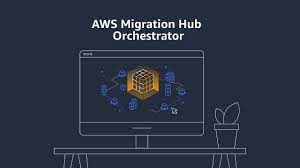In today’s competitive e-commerce landscape, customer service is one of the pillars that defines success or failure. Every day, businesses face the challenge of providing fast, efficient, and personalized service. Now, imagine a solution that not only answers basic inquiries but also handles complex interactions with customers—enhancing the experience while reducing costs. This is the story of how an e-commerce business revolutionized its customer service by integrating a virtual call center agent powered by AWS technologies and ChatGPT.
The Challenge: An Overloaded E-commerce Call Center
Laura was the manager of a successful e-commerce company selling electronics internationally. As the business grew, so did the volume of customer inquiries. From order tracking requests, returns, to technical product questions, the customer support team was overwhelmed. The call center was barely keeping up, and customer experience was suffering.
Laura knew that to continue growing, she needed a scalable solution that could handle the high volume of inquiries without sacrificing service quality. Hiring more staff wasn’t a viable option due to the cost. Laura was at a crossroads.
The Solution: AI to the Rescue
That’s when Laura decided to explore the possibilities of intelligent automation. The solution came in the form of a virtual call center agent that could handle calls and live chat interactions seamlessly through a combination of AWS Connect, AWS Lex, ChatGPT, and their WordPress e-commerce platform.
The idea was simple yet powerful: to build a system that not only listened to customers but also understood their needs and provided solutions in real-time, just like a human agent.
The Journey: Implementing the Solution
Laura’s team got to work on implementing the new solution. Here are the use cases that transformed her business forever:
1. Use Case 1: Handling Order Status Queries
A customer called to inquire about their order status. The virtual agent, powered by AWS Lex, captured the request and converted it into text. If it was a simple query like “Where is my order?”, the bot would query WordPress directly for the order status and respond in seconds.
2. Use Case 2: Automated Returns
A frustrated customer wanted to return a product. The virtual agent not only understood the request but also had ChatGPT generate a step-by-step guide on how to process the return. The best part? All this happened while the customer remained on the line—no human intervention needed.
3. Use Case 3: Answering Complex Technical Questions
Wondering if a product is compatible with other devices? No problem. Customers asked technical questions about products, and ChatGPT, trained with the e-commerce’s product database, provided detailed and accurate responses.
The Result: A Transformational Experience
The implementation of this virtual agent was a game changer for Laura’s business. Within just three months:
- 70% of calls were handled without human intervention, freeing up staff to manage more critical inquiries.
- Response times to customer queries dropped by 45%, significantly improving customer satisfaction.
- Call center operational costs were reduced by 30% thanks to automation.
Customers were more satisfied, and the company was more efficient than ever.
Conclusion: The Future of E-commerce is Smart
Laura’s case is just one of many examples of how smart solutions can transform customer service. With technologies like AWS Connect, AWS Lex, ChatGPT, and WordPress, any business can provide scalable, personalized, and efficient customer support without the high costs of traditional call centers.
Now, it’s your turn to take the next step. Are you ready to transform your customer service?
“If you’re interested in learning more about how this technology can transform your e-commerce business, let’s talk! I’m here to show you how these solutions can help your business grow while optimizing costs and delivering a world-class customer experience.”
#CustomerExperience #EcommerceSolutions #AIinBusiness #AWS #ChatGPT #VirtualAssistant #Automation #CallCenterSolutions #DigitalTransformation #ArtificialIntelligence #TechInnovation #CustomerService #BusinessGrowth #WordPressIntegration #CloudSolutions













